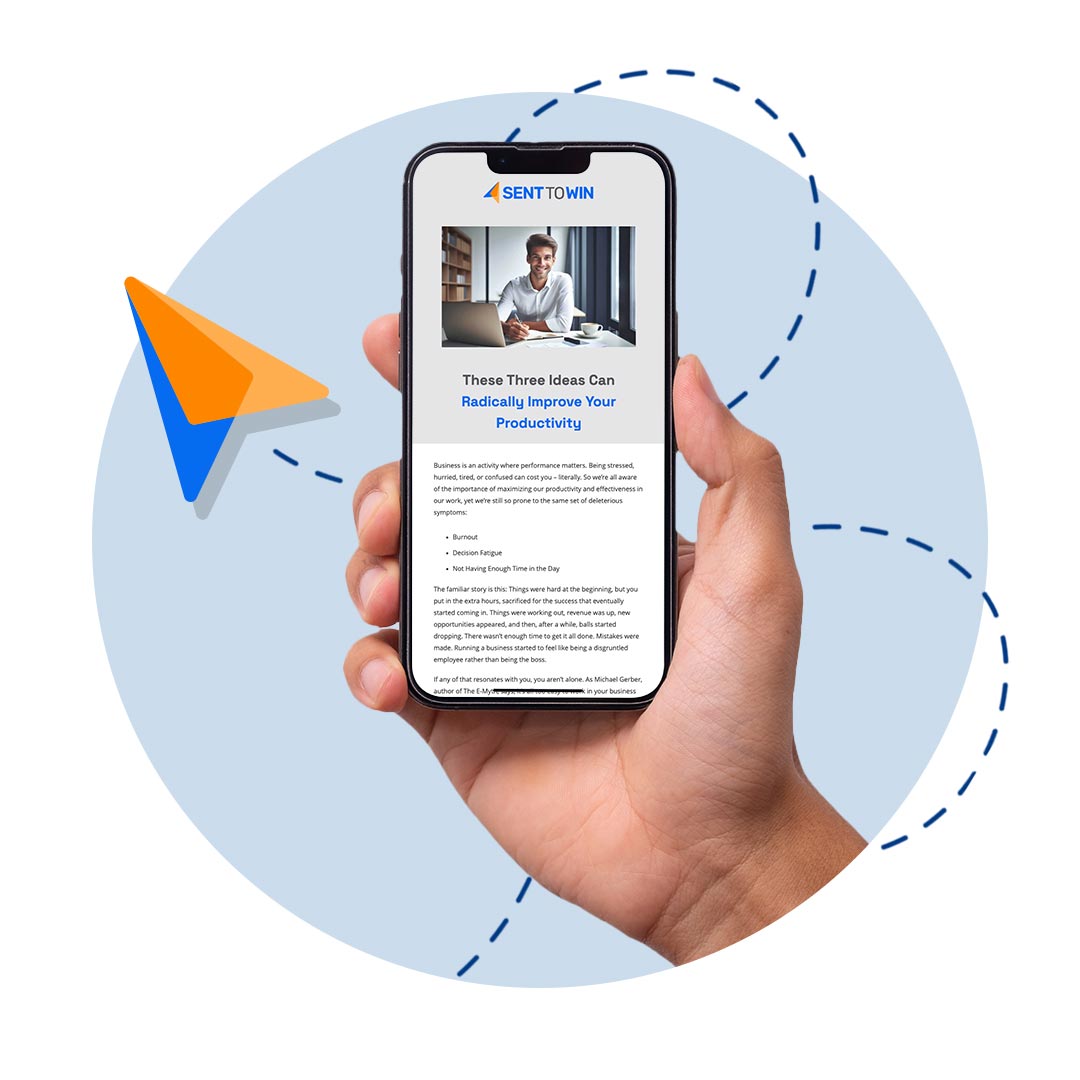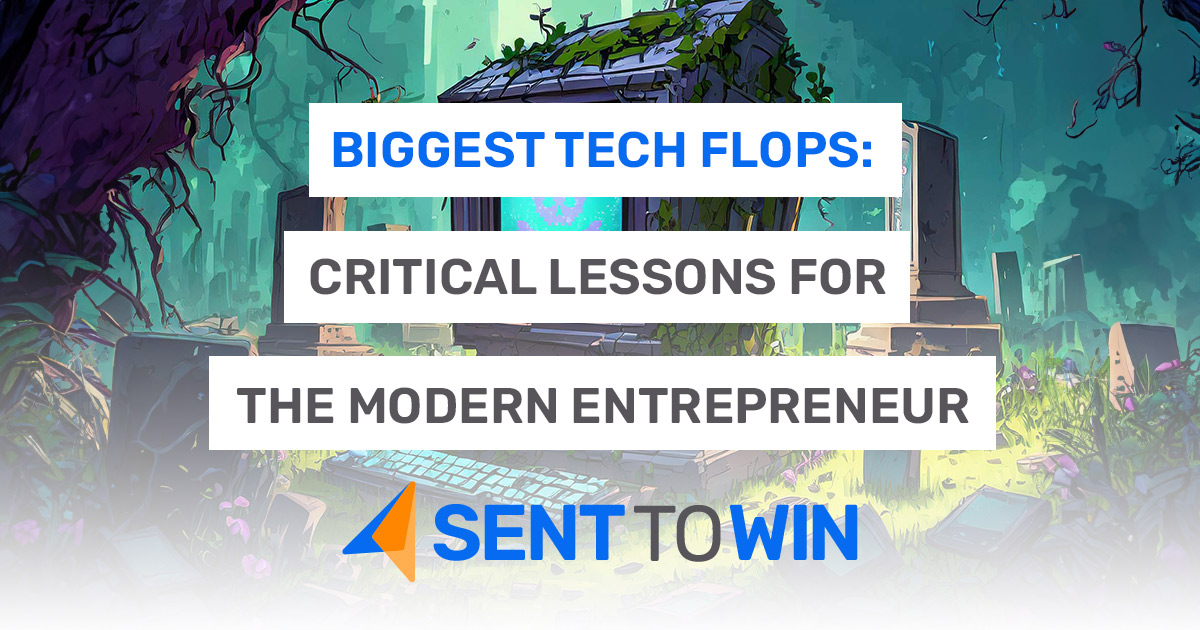Biggest Tech Flops: Critical Lessons for the Modern Entrepreneur
It seems like everyone knows the future.
At least, that’s the impression you get from most technology, business, and political commentators. And it’s easy to see why – Everyone loves a futurist. We want the security of being able to plan around sure bets. We like the intrigue of promising trends.
But not every technological innovation catches on as foretold.
Remember when Google Glass was going to be the future? Back in 2013, there was a lot of buzz around the “ubiquitous computer” that would provide a heads-up display in front of users’ eyes all day, at all times. It was going to revolutionize the world. It was going to change everything.
It didn’t.
Turns out, people don’t want to stare at a computer screen 100% of the time, and the obvious privacy concerns were enough to start Google Glass bans in many common locations before they even got momentum.
Meta, unfortunately, seems not to have learned the lesson that consumers typically don’t enjoy having computers strapped to their faces. VR headset sales are down 40% from 2022 (building on a decline from 2021-2022), and despite many billions of dollars poured into development and marketing, it looks like the Metaverse, at least for the moment, just isn’t going to happen like they said.
Today, we’re going to look at a fabulous technological revolution that never happened, plus one tech company’s failed assault on an established market space, in order to pick up on some lessons learned. Hopefully, we can avoid the same mistakes in our own endeavors – and keep an eye out as investors.
The Segway
“But… that can’t be it.”
These are the words of Good Morning America host Dianne Sawyer on December 3, 2001, when the Segway was unveiled. She was talking specifically about how you use the machine, but from the look on her face, and her cohost’s equally nonplussed reaction, she may as well have been talking about the product itself.
If you don’t remember, back in 2000, news leaked that famed inventor Dean Kamen was working on something big. Something revolutionary. Something that would “change the world.” Steve Jobs said it would be as significant as the personal computer. A huge book deal was signed with the inventor – before anyone knew what the product even was. Kamen and his team did a remarkable job keeping their mouths shut, until finally, on Good Morning America, he revealed his well-kept secret to the world.
It was a scooter.
An impressive, technologically sophisticated scooter with gyroscopes and brilliant computer chips that made it self-stabilizing. But this thing had been sold as an earth-shattering development. From talking to the inventor and hearing his vision, you get the impression that he really thought people wouldn’t walk anymore. They’d just ride Segways.
Needless to say, that didn’t happen, Kamen sold the company after just 3 years, and twenty years later, the Segway remains something of a joke, nothing more than a curiosity for tourists booking Segway tours.
Segway’s Big Lesson: The Hype Can’t Overshadow the Product
In the age of social media, Donald Trump, and the smartphone, it’s easy to get the impression that you can never take the hype too far. Every product is the best thing since sliced bread, every service is world-famous, and the louder you can be, the better. Unfortunately for the cynical self-promoters, you do still run into something called misaligned expectations when a product is oversold.
Look at it this way – if you tell your customers that they’re getting a $50 rebate, they’ll probably like that, and it may move product for you and perhaps even create some loyalty going forward if you do as promised. If you tell them they’re getting a $100 rebate, however, and you only end up giving them $50, they are going to be furious. They got $50 for free, and they will hate your company because you oversold them on your promotion.
The problem with Dean Kamen’s Segway launch is that he had credibility. We believed him when he said he had an invention that would change the world. He was capable of such an innovation. But his excitement carried him away, and in that year of speculation, people’s imaginations ran wild. The product didn’t have the ability to live up to the hype that it created, and so the Segway rolled into the dustbin of history.
Getting excited about your product or service is fine and good. You should be excited about your product or service. But don’t call it a revolution… unless it is one. Most of the time, it’s not going to change the world, so aim for the right marketing message that will resonate even after the customer gets the product in their hands.
Google+
Google didn’t invent social media, but it didn’t have to. When Google+ unique brand of social media launched in 2011, it was hyped as “The Facebook-killer.”
And why shouldn’t it have been? Google was the 800lb gorilla, the big tech company overshadowing all others. With Google’s built-in advertising and distribution (from so many web users starting on their homepage), their massive war chest, and technical genius, it’s no wonder that millions of users signed up instantly. After only a year, 90 million people had Google+ accounts.
And then… Well, it just never really took off. It was eventually announced that Google+ would come to an end in 2019, but it was taken down even before its termination date. And no one really noticed.
Google+’s Big Lesson: Don’t Take on an Opponent You Can’t Handle
When Google announced its plans for a social media network to rival Facebook, it was a shot fired, a declaration of war. And despite a lot of great expectations, Google just didn’t seem all that invested in winning the fight.
Facebook was in a strong position, with over 500 million active daily users at the time, and the team at Facebook was working hard to ensure greater and greater attractions to increase engagement on the site, including adding new features and calibrated re-designs always meant to enhance user experience.
Google+ had a change in leadership a couple of years after launch, and instead of gaining features, it kept losing features. Initially, Google+ was integrated with YouTube, Google Photos, Hangouts, etc. But it began removing this functionality early on, and the product just wasn’t strong enough without it. The user interface was difficult to figure out, and people found it hard to spend more than 5 seconds on the social network. It wasn’t clear what you were supposed to do there.
This all coming from a company whose then-CEO said, when asked why Google hadn’t gotten involved in social media before Google+: “I was busy.”
And that was the sense we got from Google, even after they got into social media: They’re busy. They have other things to do. They have a search engine, AI research, and a lot of very important things. From time to time, it seems, they’d remember that they had a social media network, but then they would quickly forget and move on to more important things. It’s no wonder they lost.
As business leaders, we don’t need to be all things to all people. But if we decide to expand into contentious territory, we have to accept that it’s going to be an uphill battle and plan (and execute) accordingly. No large, established company is going to just let you waltz in and steal their market share. Taking on an industry leader requires a lot of grit, nimbleness, and attention. If you can’t stand the heat, don’t go into the kitchen in the first place.
TL;DR
Hype is a powerful thing. Great expectations are wonderful in business, and if you can get people talking before you release your product, so much the better. But beware of over-selling your product and creating misalignment between consumer expectations and what is actually delivered. And if you’re going to take on a serious competitor, you can’t put the project on the back burner. It’s going to take all that you’ve got.

Jaime’s revolutionary “Chair-Pants” earned him a lot of confused stares, but he took consolation in knowing that he was the future.
Quick Hits
- Donald Trump wins the New Hampshire Republican Primary with 54.5% of the vote.
- Chinese and Hong Kong stocks continue crashing, having wiped $6 trillion off the board in the last 3 years.
- Sports Illustrated begins laying off its entire staff, and likely will not bounce back.
- Luke Larson of Relevant explains how doubt saved his faith.
- The SEC backs conservative Apple shareholders in their objections to the app store’s alleged ideological discrimination.
For Kingdom Leaders, By Kingdom Leaders
Bringing Kingdom-minded leaders like you fresh perspectives and insights on business, finance, and leadership trends.




